A journey through the heart of Tuscany
295kms – 15 days
Refreshed and revived after my jaunt to the Ligurian coast, I spent two weeks walking my way through the heart of Tuscany. My days were full of stunning cities and jaw dropping hill top towns, delicious regional cuisine, plenty of up and down, and, at times, hoards of tourists. Tuscany really is as beautiful as everybody says. But for me the gems were to be found in the lesser known places, where the locals still outnumber the tourists and where daily life isn’t disturbed by coach loads of day trippers. This “real” Tuscany is where the region’s beauty really lies.
Making my way south from Tuscany’s quiet northern frontier, I snaked through hills that were sandwiched between the Apuan Alps and the Mediterranean Sea. The mountains were topped with white peaks that could have been mistaken for snow, but it was, in fact, marble.

Since the days of Ancient Rome, Carrara marble has been used in countless sculptures and buildings around the world. It’s been carved into Rome’s Pantheon and the Column of Marcus Aurelius, Michelangelo’s David, London’s Marble Arch, Washington D.C.’s Peace Monument, and Abu Dhabi’s Sheik Zayed Mosque. The quarries that I walked past have produced more marble than anywhere else in the world.

I passed huge blocks of white marble, sitting in factory forecourts like giant icebergs, ready to be shipped to their new homes in far away lands. But the Italians have also kept plenty of marble for themselves. In the towns of Avenza and Massa everything from cathedrals to park benches, statues to staircases, glistened a brilliant white.
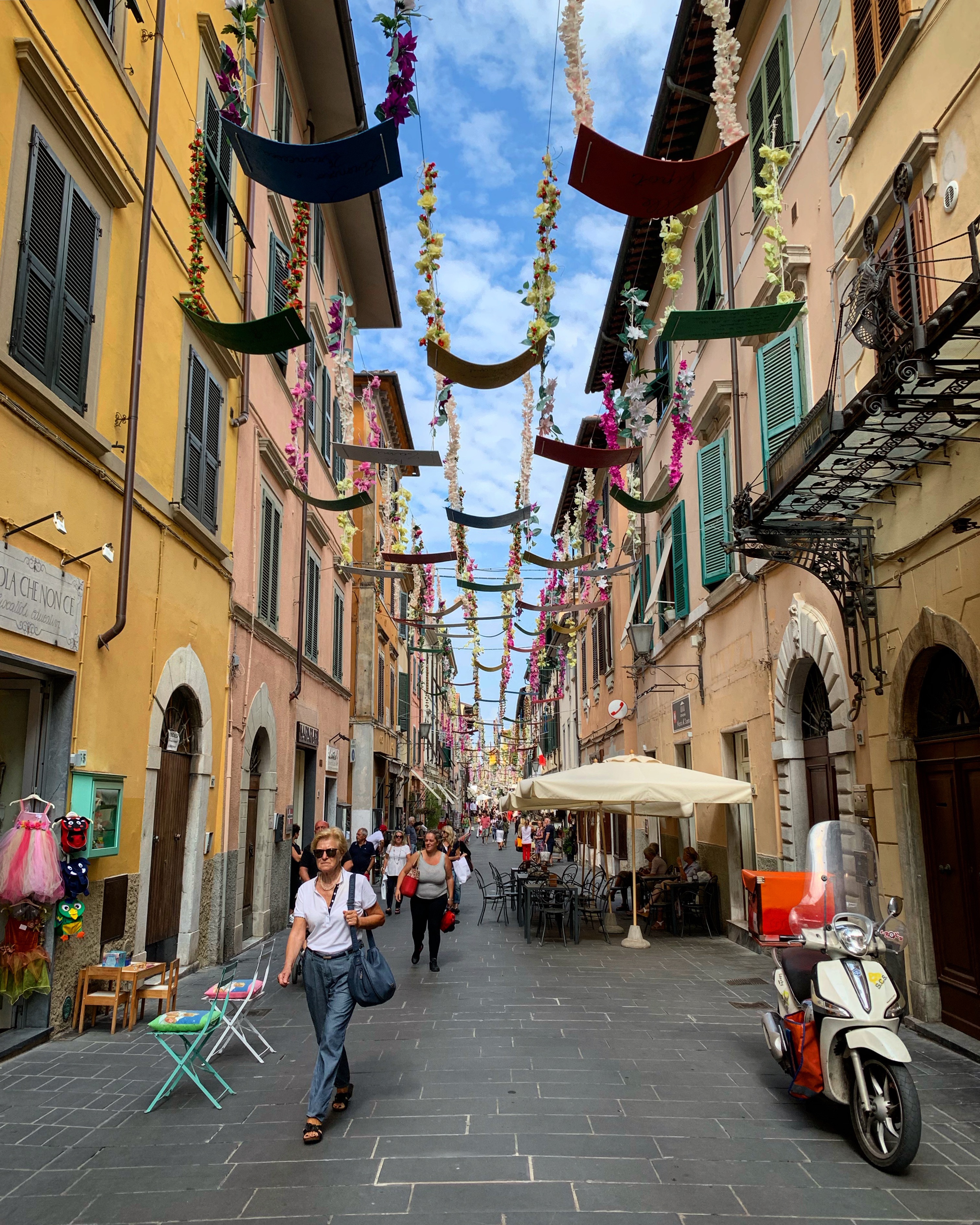
This corner of Tuscany doesn’t just produce fine marble, it also has a long tradition of producing world class artists, particularly sculptors. For centuries the town of Pietrasanta has been a magnet attracting artists from all over the world, earning it the nickname “Little Athens”. Michelangelo came here to learn from the local artisans and to select the finest marble for his sculptures. And more recently the Colombian artist Fernando Botero and the late Polish sculptor Igor Mitoraj have called Pietrasanta home.
Today Pietrasanta is an open air art gallery, with streets lined with permanent and temporary sculpture exhibitions that are sandwiched between traditional churches, palazzos, and bell towers. Countless studios and foundaries also dot the town, and are where artisanal trades continue to be passed down from generation to generation.

I walked through bamboo forests and climbed to the top of steep hills before following the River Serchio towards the walled city of Lucca. I’ve been wanting to visit Lucca for the best part of 10 years, and the Via Francigena took me right into the heart of the city.
With origins that date back to the Etruscans, Lucca oozes history, style, and tourists. It’s perfectly preserved medieval walls keep the bulk of the city’s traffic out, leaving pedestrians and cyclists to meander the tiny streets and alleyways. Traffic jams are, however, commonplace. And it’s all down to the shops which are ridiculously beautiful, the delicatessens which lure you in with their wafts of fresh truffle, and the gelaterias which are irresistibly enticing.
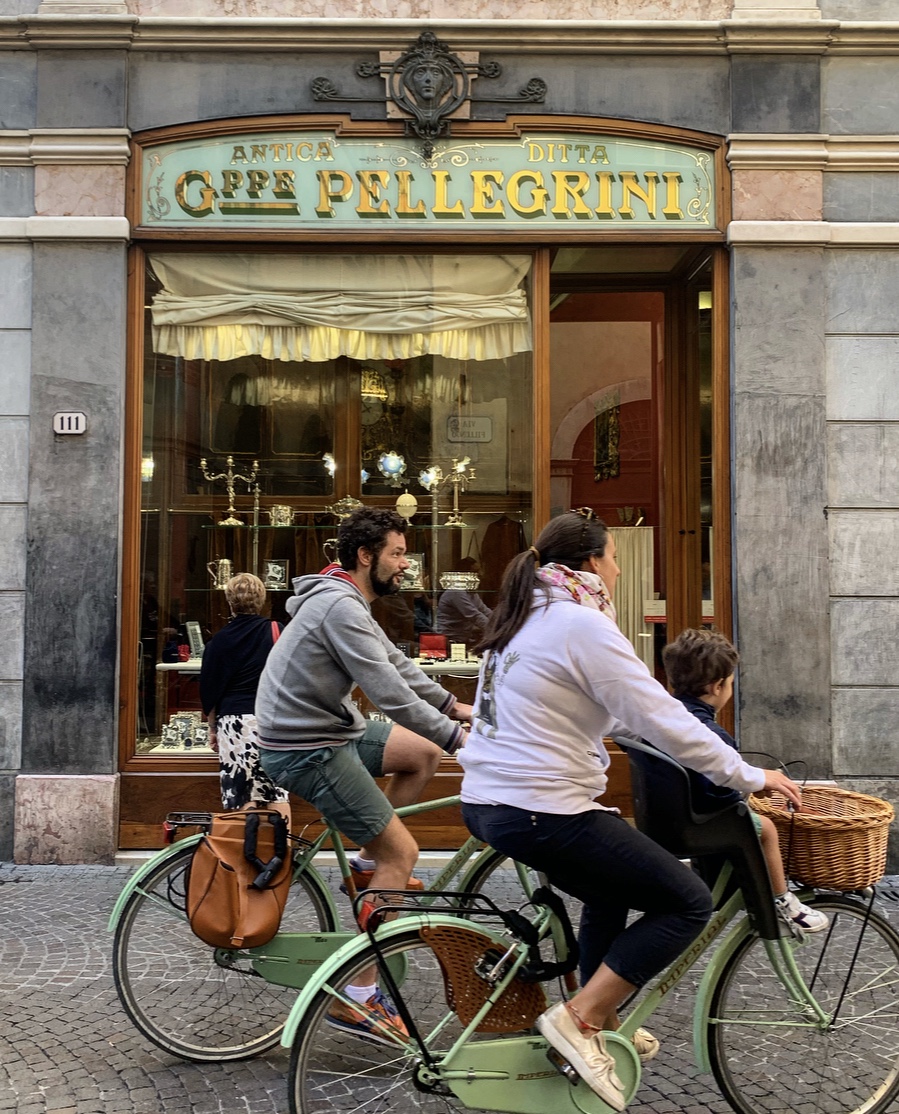

Lucca’s piazzas were some of my favourite to date, lined with the stunning marble facades of Cattedrale di San Martino and San Michele in Foro, the townhouse where the great opera composer Giacomo Puccini was born, and countless bars housing weary tourists.
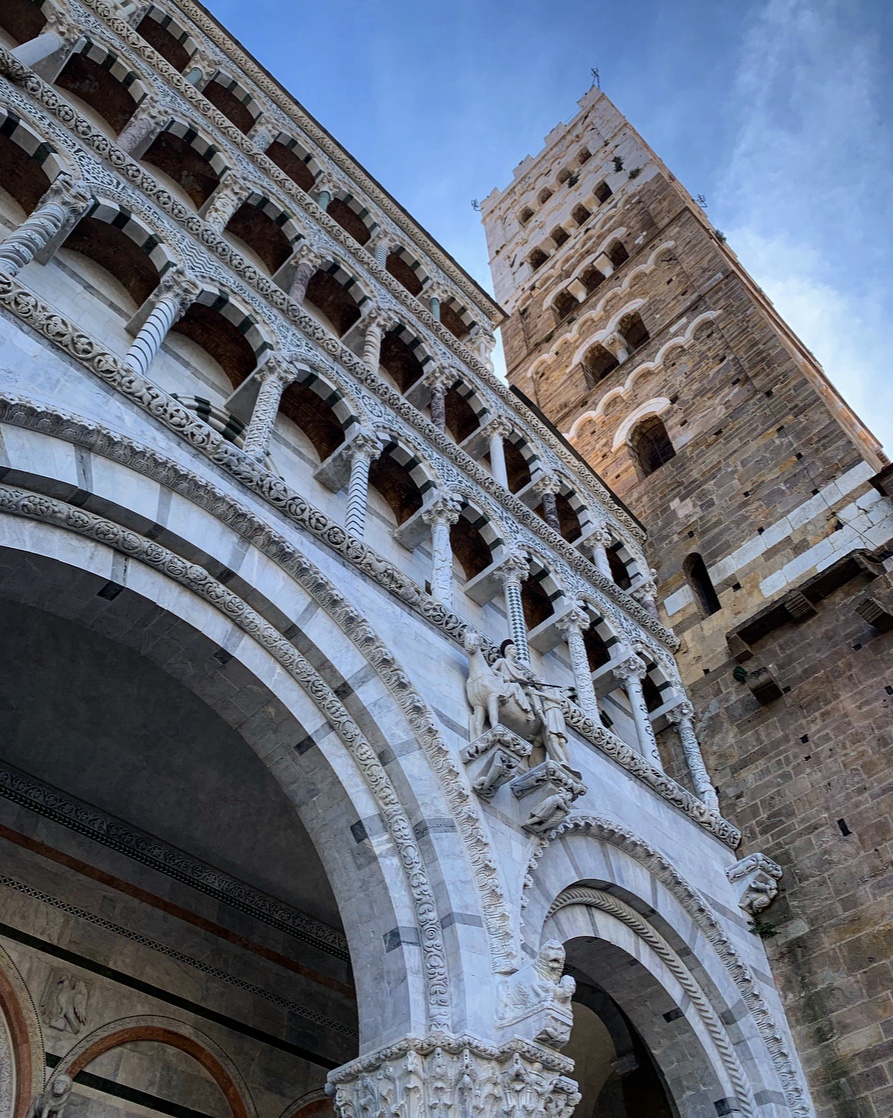

I spent my birthday walking in rain and thunder storms of biblical proportions. The soft red soil of the forest tracks that I slipped and slid along gathered on the soles of my boots, adding inches to my height. As the rain continued to come down, I took shelter in every village bar I could using my birthday as an excuse to indulge in pastry after pastry. And, after deciding to power on through the storm and arriving at my destination, Aperol Spritz after Aperol Spritz.


Mist and cloud swirled its way around the hilltop town of San Miniato, and hundreds of dewy spiderwebs lined my path through the Tuscan hills, twinkling in the morning light. I walked through olive groves and vineyards, and in the distance I got my first glimpse of the infamous skyline of San Gimignano’s medieval towers.

San Gimignano is an immaculately preserved hilltop town, with 14 of its 70 medieval towers still rising into the sky. By day it’s flooded with day trippers, whose accents drown out everything that is Italian about the town. By night it returns to its Italian roots, its piazzas gently humming with life and its streets a place where locals and tourists take a leisurely passeggiata. But my favourite time of day in San Gimignano was the early morning, when its streets were so quiet that you could say “Buongiorno” to every local that you passed.
Long days walking were rewarded with plates full of mouthwatering food. Linguine with tartufo (truffle), pappardelle with cinghiale (wild boar), the local pici pasta (which is like a thick spaghetti) with cacio e pepe (sheep’s cheese and pepper), pizza topped with fresh buffalo mozzarella, strong and tangy pecorino cheese and stale focaccia drizzled with olive oil. And, of course, plenty of gelato. I was getting tempted to keep walking beyond Rome so that I could keep eating. There surely can’t be a better country in which your daily activity requires you to hoover up calories.

I started to pass through parts of Tuscany that were unfamiliar, parts which don’t steal the spotlight. Colle di Val d’Elsa took me by surprise with its beautiful medieval old town, with streets lined with world famous crystal glass workshops. And the seemingly fairytale setting of Monteriggioni, a tiny village surrounded by medieval walls and sitting high on a hill, was yet another delight.

The place that totally stole my heart, though, was Siena. Within a few minutes of walking through the city’s gates it had claimed the title of my favourite city on the Via Francigena. Maybe even my favourite city in Italy. Sure, it has its fair share of tourists, but unlike much of Tuscany it still feels real. Siena has soul, a distinctly Italian soul.
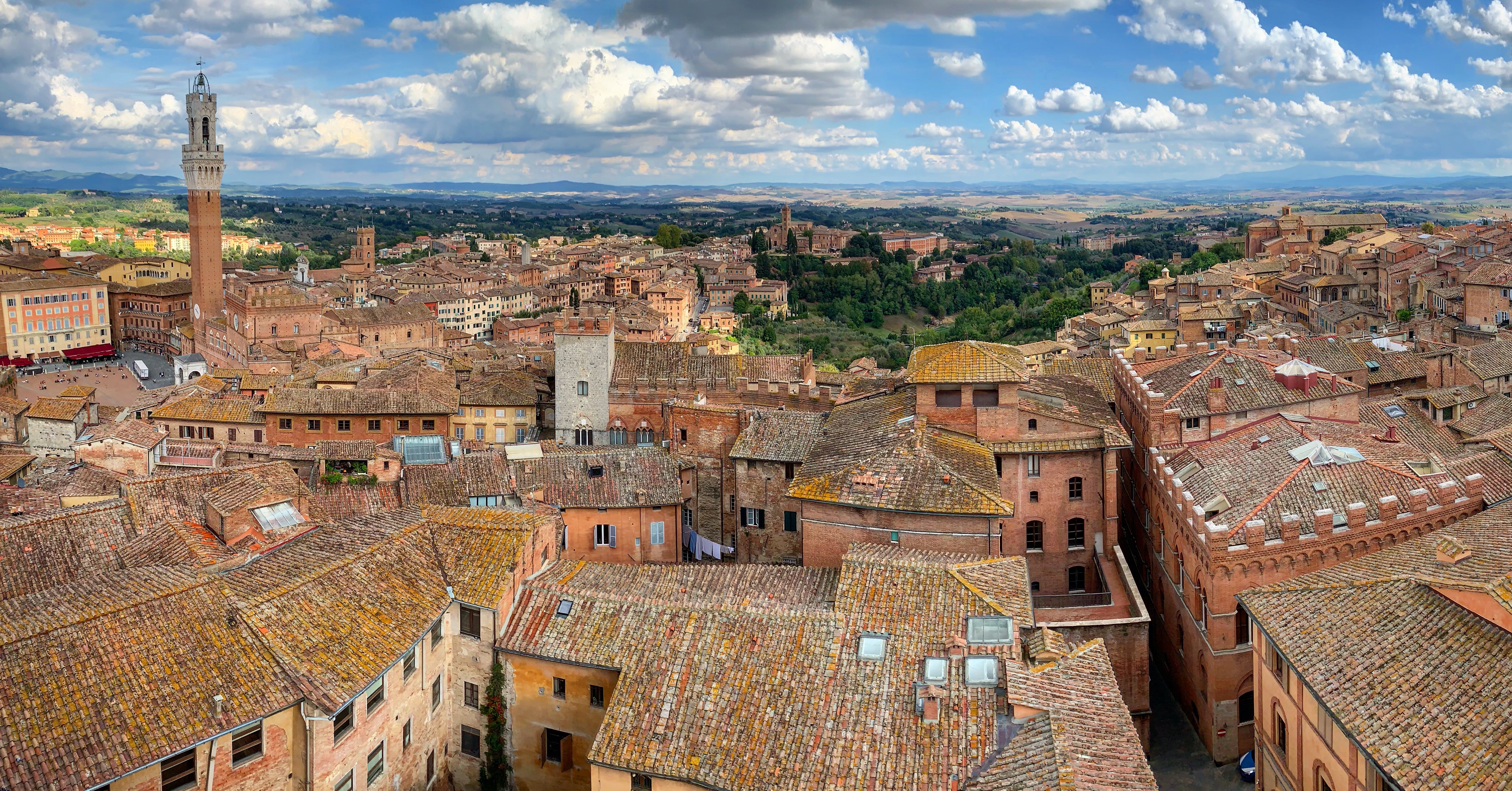
Siena is rich in history and tradition, architecture and art. Its iconic main square, Il Campo, overlooked by the Torre del Mangia, is the beating heart of the city, drawing people to it like a magnet at all times of the day and night. It’s the location of the annual Palio horse races, where the city’s 17 contrade, or wards, battle it out for the pride and the glory.


The streets are beautiful, tracing the rise and fall of the city’s hills, and are full of character, charm, and flags and plaques to remind you which contrada you are passing through. The Duomo di Siena is a masterpiece, it’s black and white marble stripes a patriotic nod to the colours of the city’s flag. The mosaics that line its floor are utterly remarkable, and only on display during the summer months. They took over 40 artists more than two centuries to complete, and are unlike anything I’ve ever seen. And the pilgrim hall in the beautiful Santa Maria della Scala, where I would’ve been welcomed had I been a pilgrim in the Middle Ages, was equally as breathtaking.
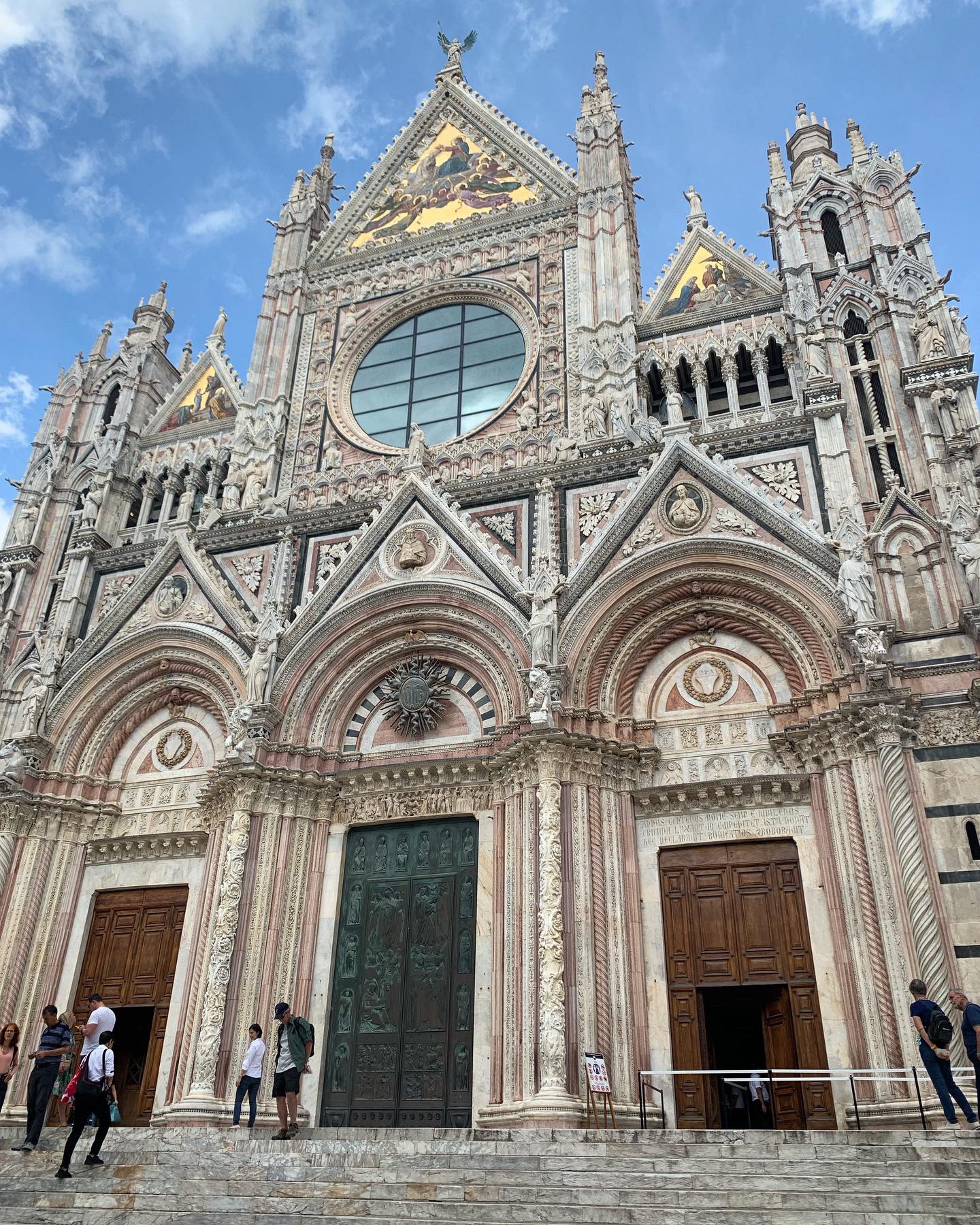


I reluctantly put on my walking boots and left Siena, hopeful that I would return to spend more time there in the future. My spirits were soon lifted, though, by the scenery and authentic towns of the Val d’Orcia, which stretches south from Siena towards Lazio. The landscape is truly breathtaking, and it’s easy to see why it’s been chosen as the location for countless films, including Ridley Scott’s Gladiator. This is quintessential Tuscany.
There’s something about the way the light falls here, something truly magical. There is depth and detail, light and shadow. My mornings walking through this part of Italy were my favourite since leaving London. Every climb to the top of a hill seemed to take me to a place of beauty, with a foreground of vines and olive groves set against a background of Tuscany’s iconic cypress trees and lone farmhouses.


I passed through utterly stunning towns and villages, none of which I’d ever heard of before and all of which lacked the hoards of tourists that I’d encountered further north. San Quirico d’Orcia had charming streets and a quirky sculpture park, and Buonconvento’s old town was like a place where time stood still.
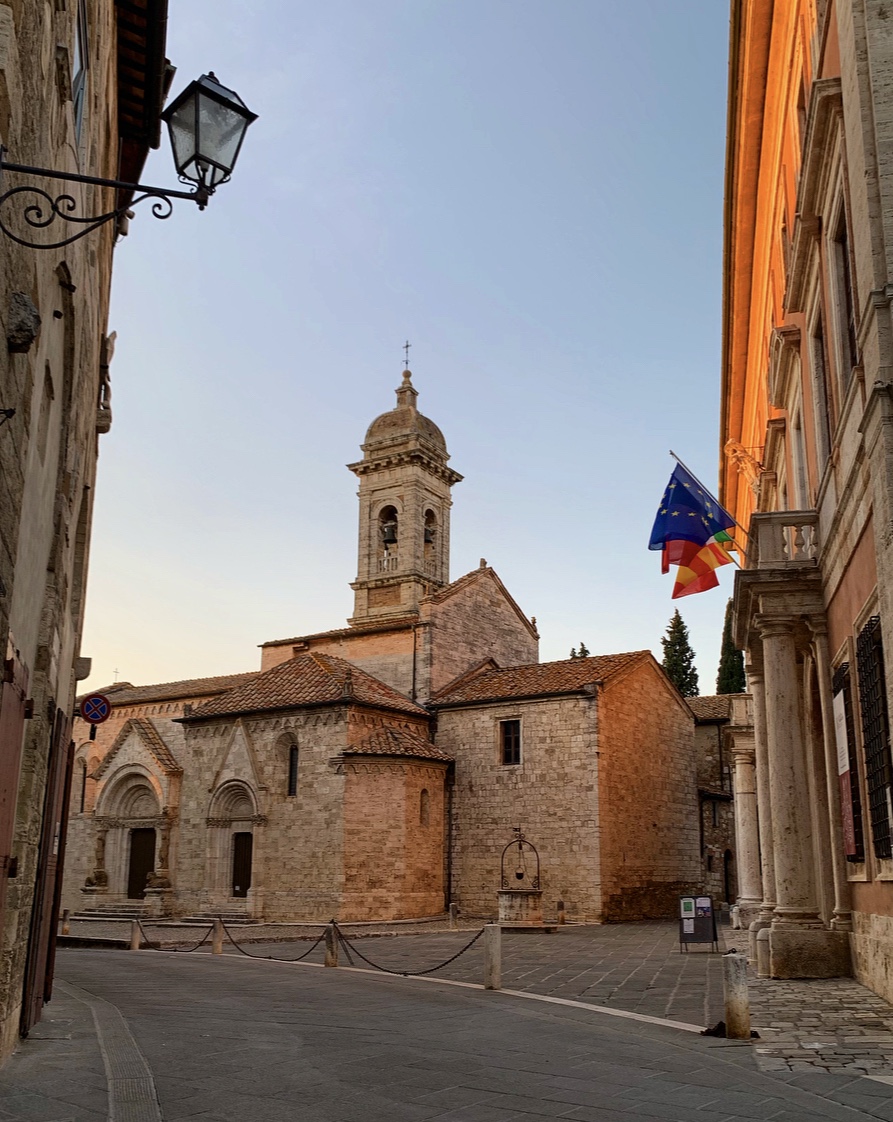

Vignoni Alto was little more than a hamlet, but it offered the most stunning views across the Val d’Orcia. And the hot springs of Bagno Vignoni, renowned for their therapeutic properties since Etruscan and Roman times, couldn’t have been more picturesque.



Tuscany is characterised by its hilltop towns, so it was fitting that a long day of climbing up and up, and further up and up, took me to my last stopping point before I entered Lazio.
Lazio, the home of Rome. Which meant that I was getting close. With somewhere in the region of 2,000 kilometres behind me and around 200 kilometres to go, a very surreal feeling was starting to sink in.

As I crossed in to Lazio things started to feel familiar. The place names on road signs, the crumbling facades of buildings. The gritty reality of a world that isn’t picture perfect Tuscany. I’ve been coming to northern Lazio my whole life, as it’s where my Mum and her parents hail from. So although I was excited to be within spitting distance of Rome, I was just as excited to be walking through the land of my ancestors. And in the coming days I was to go on my own personal pilgrimage, away from the Via Francigena, to the places where they were born, where they were baptised and married, where they lived and worked the land. It was going to be an emotional journey, and I could feel the emotions starting to build.

I’m walking from London to Rome to raise awareness about mental health and money for the mental health charity, Mind. You can read more here, and if you would like to make a donation please visit my fundraising site. Thank you.